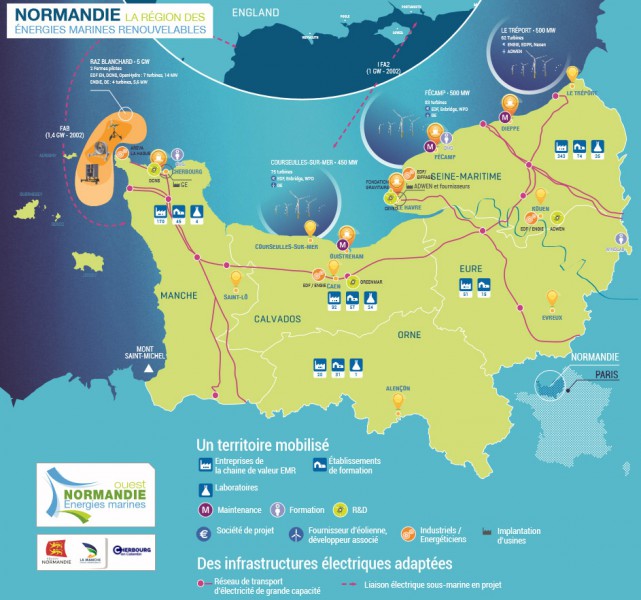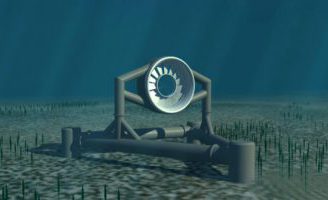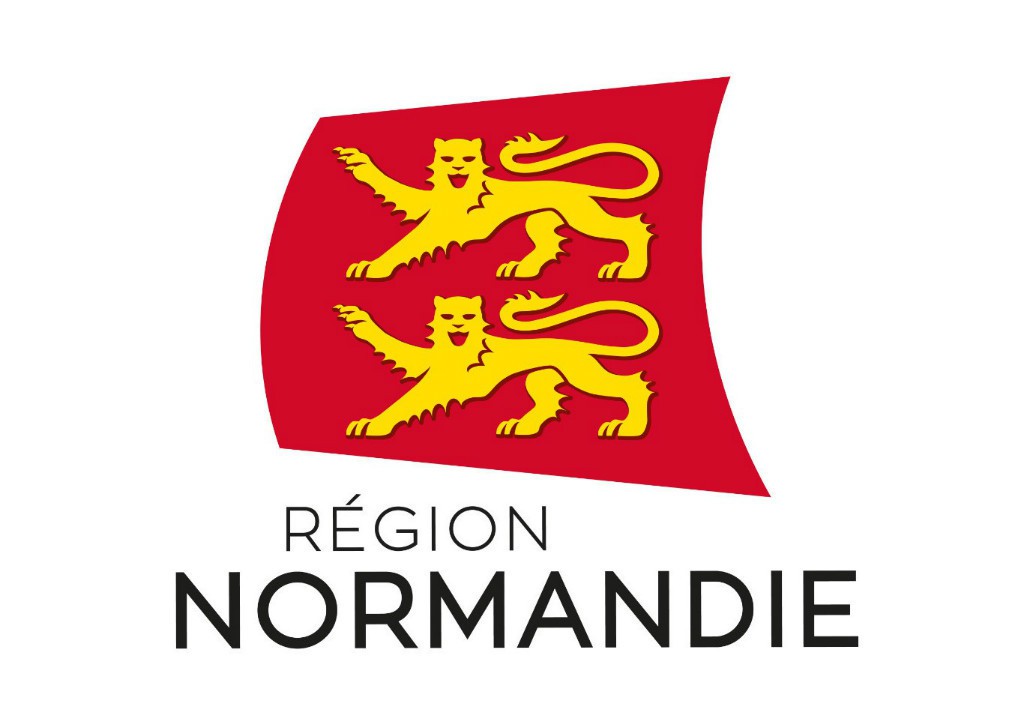LIPRA – Projet interdisciplinaire pour la protection des EMR et de l’environnement
Liquides Ioniques Polymérisables pour Revêtements Antisalissure
Les Énergies Renouvelables représentent un enjeu stratégique pour la France, notamment pour répondre aux problématiques de dépendance énergétique et d’écologie, et un enjeu de développement économique d’envergure pour la Normandie, qui ambitionne de devenir leader dans la recherche, l’innovation et l’exploitation des Énergies Marines Renouvelables. Le développement d’une nouvelle filière énergétique fait cependant émerger de nouvelles problématiques d’exploitation. Le projet LIPRA tente d’apporter une réponse concrète à l’une de ces problématiques : la protection des installations, pour une meilleure compétitivité tarifaire et dans le respect des contraintes environnementales.
Depuis l’intégration des projets EMR dans le mix énergétique français, la Normandie est devenue LE territoires des EMR en France. Avec plus de 600 km de côtes, elle dispose de l’un des premiers gisements européens pour l’éolien en mer et a été choisie pour l’implantation de 50% des futurs parcs éoliens offshores français (Courseulles-sur-Mer, Fécamp et Dieppe-Le-Tréport). La région détient également le 1er potentiel hydrolien mondial exploitable commercialement (passage du Raz Blanchard), un réseau de transport d’électricité de grande capacité (grâce notamment à la présence de 3 centrales nucléaire et à la construction de l’EPR sur son territoire), et des infrastructures portuaires en pleine mutation pour accueillir les futures usines de fabrication d’éoliennes offshores et d’hydroliennes.
Protection des hydroliennes : un enjeu économique et écologique
Ce tournant industriel pousse donc les différents acteurs des EMR (PME, industriels, chercheurs et universitaires) à répondre à de nouvelles problématiques, dont celle de la détérioration des installations métalliques immergées en mer.
Dans le cas des hydroliennes, les structures métalliques qui les composent sont munies de turbines de 3 à 16 mètres de diamètre, pèsent plusieurs centaines de tonnes et sont immergées au fond des mers à quelques kilomètres des côtes. Elles sont soumises à de fortes contraintes : un environnement extrêmement corrosif (ions chlorures et sulfates) et entartrant (calcaire, calcium et magnésium), la présence de bactéries incriminées dans le processus de Corrosion Influencée par les Microorganismes (CIM ou biocorrosion), une accumulation d’algues et de coquillage entravant le fonctionnement des turbines, etc. L’ensemble de ces facteurs réduit considérablement le rendement des hydroliennes et leur durée de vie, et engendre des coûts de maintenance importants, ce qui constitue un frein non négligeable à l’exploitation de cette technologie. D’où l’importance de mettre en place des solutions de protection efficaces.
REACH, ou la mutation d’un marché
Des systèmes de protection antifouling existent déjà, mais l’arrivée du règlement REACH (Registration, Evaluation, Autorisation and Restriction of CHemicals), entré en vigueur en 2007, à quelque peu bouleversé le marché des peintures antisalissures et biocides. En effet, REACH vise à maîtriser les risques potentiels de nombreuses substances chimiques sur l’Homme et l’Environnement, dont les molécules utilisées dans la fabrication de biocides. Dans ce cadre, tous les biocides sont soumis à une autorisation de mise sur le marché suivant l’évaluation de la toxicité des molécules qui les composent, de leur vitesse de dégradation, ou encore de leur écotoxicité sur le milieu aquatique. Au fur et à mesure des études, certaines molécules se sont vues interdites de mises sur le marché européen (Exemple : la cybutryne, largement utilisée pour ses propriétés biocide dans les revêtements antifouling, a été interdite en janvier 2016 par la Commission Européenne[1]).
D’autres n’ont pas encore été approuvées et sont inscrites dans le Programme de Réexamen. Si les produits biocides composés de ces substances bénéficient d’une autorisation de mise sur le marché provisoire dans l’attente de la conclusion de ce réexamen, cela signifie qu’à l’issue de cette période, ces produits pourraient être finalement interdits. Il en résulte donc une mutation du marché des produits biocides et peintures antifouling, en vue d’anticiper l’interdiction de certaines substances.
LIPRA : une réponse concrète au développement des EMR
C’est dans ce contexte qu’a été initié le Projet LIPRA, pour Liquides Ioniques Polymérisables pour Revêtements Antisalissure, par le Laboratoire de Chimie Moléculaire et Thio-organique[2], en partenariat avec le laboratoire de Biologie des Organismes et Ecosystèmes Aquatiques[3] et Corrodys.
Ce projet vise à développer un nouveau revêtement antisalissures répondant à un cahier des charges précis : être anticorrosif, ayant à la fois des propriétés bactéricides et fongiques, viable économiquement, avoir une durée de vie suffisamment longue et être résistant à l’abrasion, la biodégradation et à l’érosion, tout en respectant l’écosystème marin.
L’originalité de ce projet réside dans la synthèse d’un revêtement écologique, exempt de métaux, qui recouvrira la surface des structures immergées d’un film polymère constitué de sortes de brosses microscopiques. Seules les bactéries au contact du revêtement subiront alors une destruction de leur membrane cellulaire, ce qui aura pour effet d’empêcher leur prolifération et de protéger les installations contre la biocorrosion et le fouling.
Plus qu’une réponse concrète aux problématiques de la filière émergente des EMR, ce projet vise également à renforcer et à développer les dynamiques de coopération interdisciplinaires en région Normandie, en mettant en relation chercheurs, universités, laboratoires et entreprises.
![]() Partenaires
Partenaires
![]() Financeurs
Financeurs
[box_info]
[1] Décision d’exécution n’approuvant pas la cybutryne
[2] LCMT – Unité Mixte de Recherche CNRS / ENSICAEN / UNICAEN situé à Caen
[3] BOREA – Unité Mixte de Recherche CNRS / UNICAEN / MNHN / UPMC / IRD situé à Caen
[/box_info]










